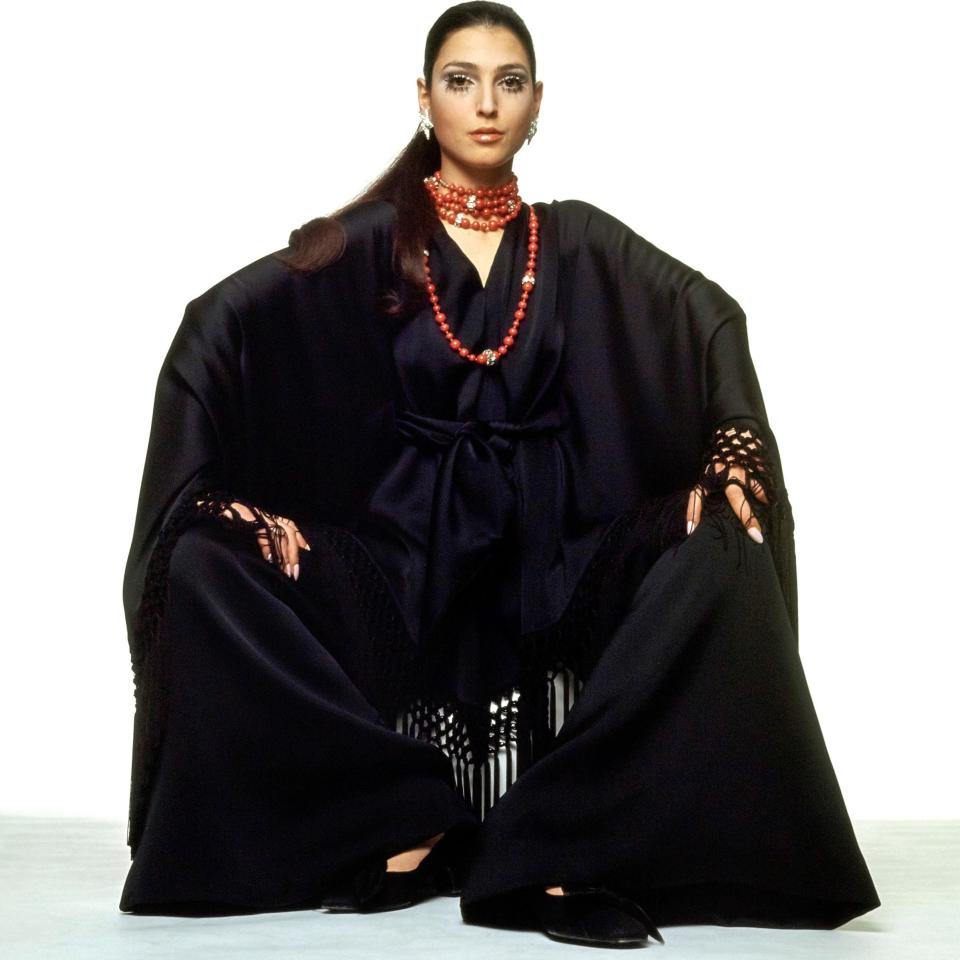The Relaunch of the Italian Jewelry Brand Coppola e Toppo Is a Promise of Post-Pandemic Glitter
Some predict that post-pandemic fashions will be minimal and protective, but Italian businessman Pietro Paolo Longhitano and designer Rossella Jardini are not among them. Both remain focused on exuberance as they move ahead with plans to relaunch Coppola e Toppo, the fashion jewelry house founded in 1948 by Lyda Coppola in Milan. A post-war success story, the company was literally a shining example of “Made in Italy” quality with a boutique on via Manzoni.

Benedetta Barzini in a Valentino Poncho, Vogue
In the 1960s Coppola created “satellite orbit earrings” for Emilio Pucci, as well as sparkling baubles for Valentino and Ken Scott. The A.P. credited the company with “providing much of the glitter for Italian shows.” Even earlier, it was supplying jewelry to Paris couturiers including Elsa Schiaparelli and Christian Dior. Nostalgia for 1950s and 1960s glamour inspired Longhitano to acquire the brand, but both he and Jardini trace their memories of Coppola e Toppo to the 1970s. Longhitano was introduced to Coppola’s work by a stylish aunt; Jardini, who is best known for her years at Moschino, was a collector of this Italian bigiotteria.

Though sidetracked by COVID-19, Jardini and her team are currently developing the debut collection, which will be crafted by artisans using the traditional interwoven technique employed by Coppola herself, which produces spectacular color gradients. The plan is to edit the company’s forgotten archive and give it contemporary relevance by using new materials.
“It is inconceivable for me to see myself without bijoux,” Jardini told Vogue. This new project expands on that idea as it elaborates on the work of Lyda Coppola and brings the past into the present through Italian craftsmanship.
Originally Appeared on Vogue

